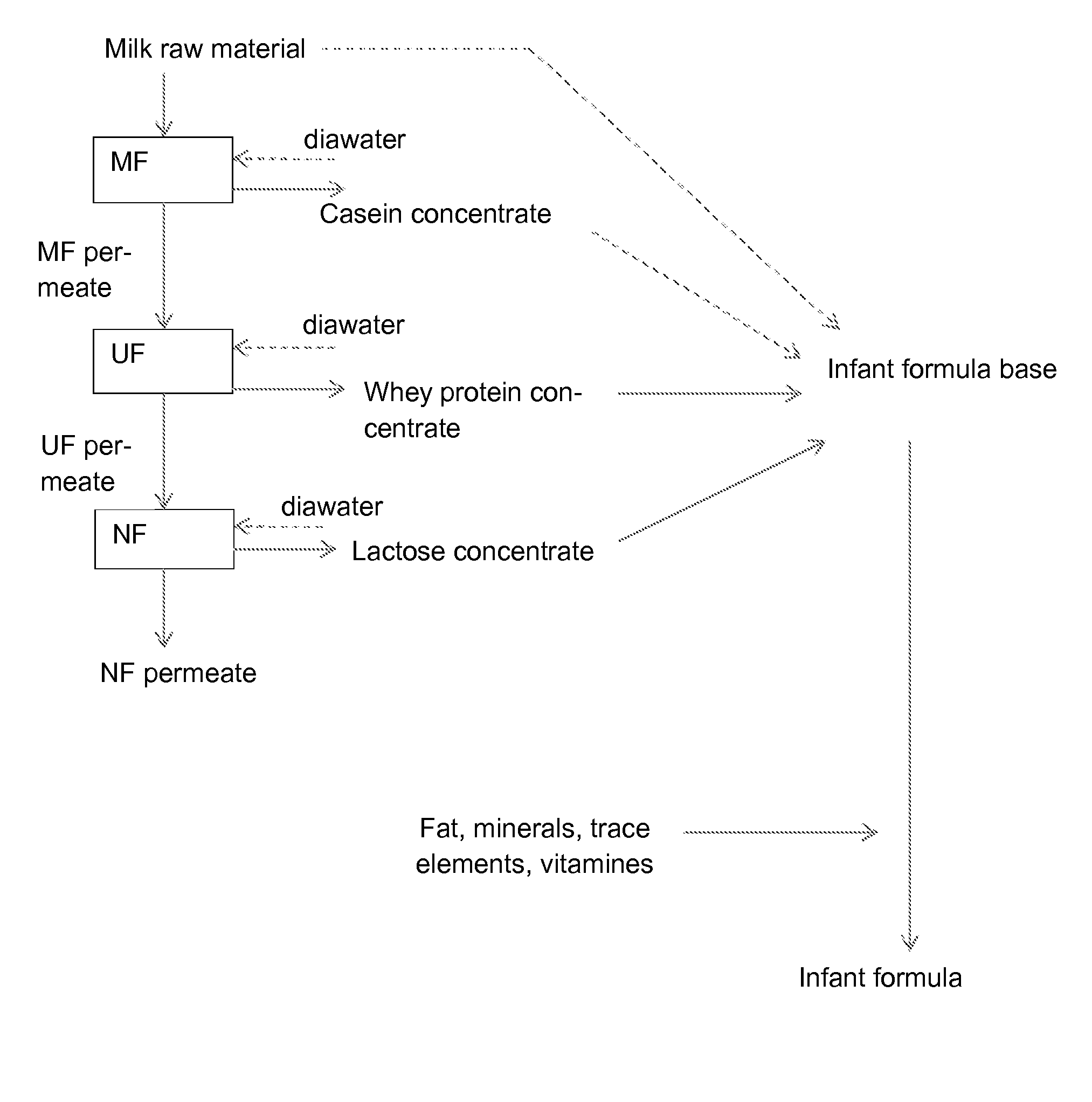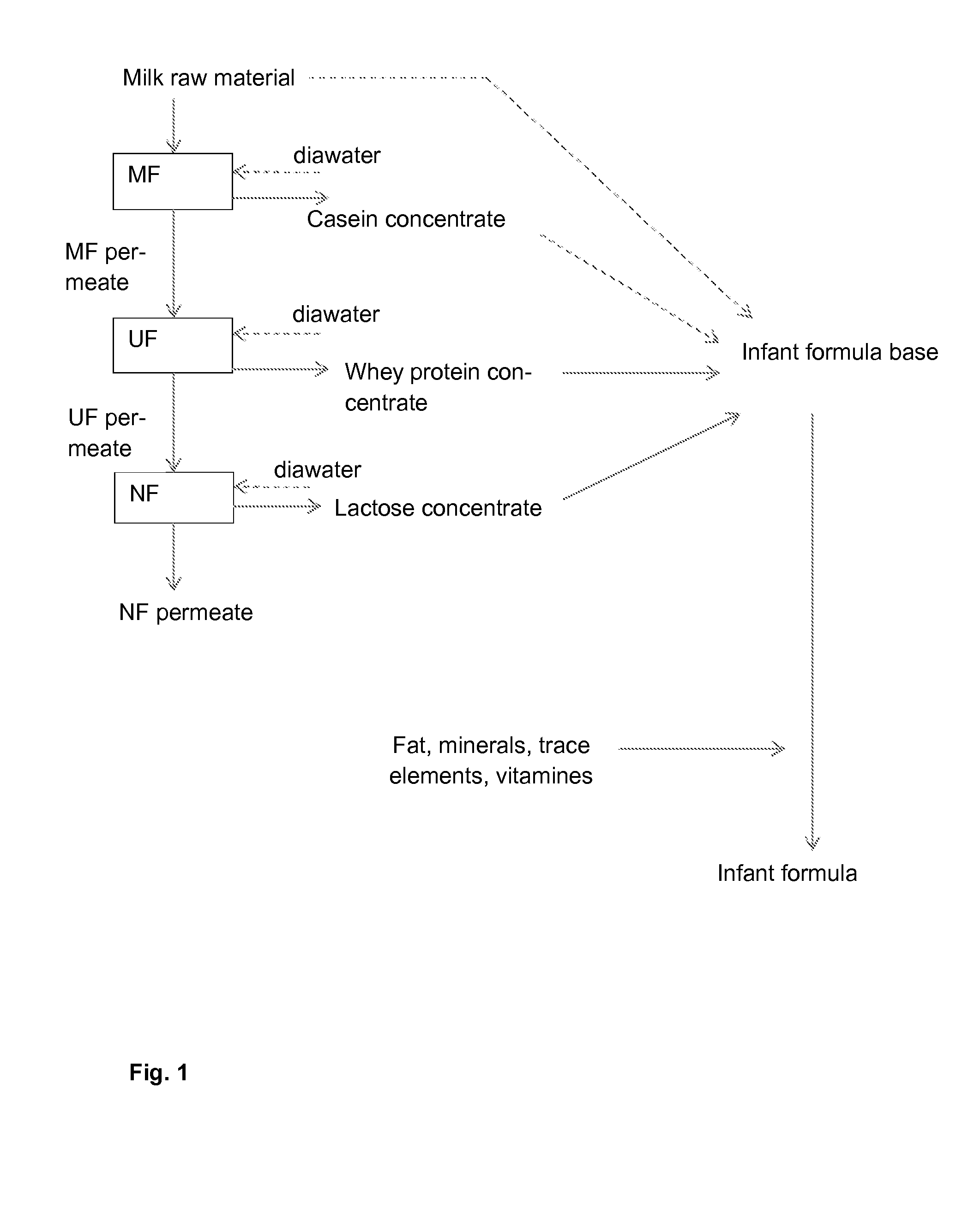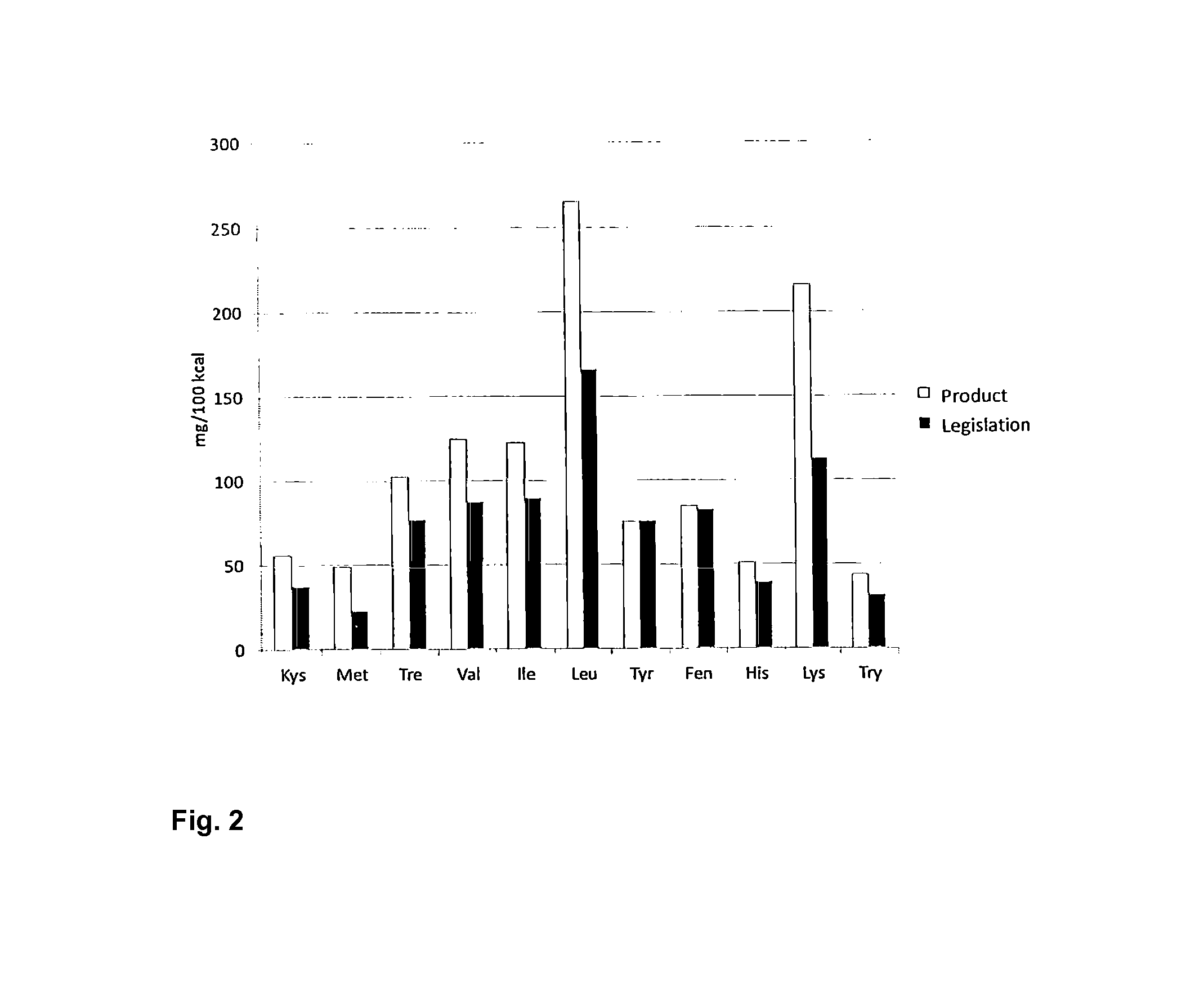Method for producing a milk product
a technology of milk product and milk powder, which is applied in the field of milk product production, can solve the problems of excess protein and unnecessarily overstrain the child's metabolism, and the child's rapid growth is not easy to achieve, and achieves excellent amino acid composition, decreased protein concentration, and rapid growth. rapid
- Summary
- Abstract
- Description
- Claims
- Application Information
AI Technical Summary
Benefits of technology
Problems solved by technology
Method used
Image
Examples
example 1
[0060]Skim milk (1 000 L) was microfiltered by polymeric filtration membranes (Synder FR) having a pore size of 800 kDa. The filtration temperature was 12° C. The milk was concentrated to a concentration factor of 3.3, followed by diafiltration. In the diafiltration step, a 1.5-fold amount of water was added to the microfiltration retentate. Water was added at the same rate as the permeate was collected. This gave 300 L of microfiltration retentate and 2 200 L of microfiltration permeate.
[0061]The microfiltration permeate was concentrated by ultrafiltration with 10 kDa membranes (Koch HFK-131) to a dry matter content of 12%. This gave 50 L of ultrafiltration retentate and 2 150 L of ultrafiltration permeate. The ultrafiltration permeate was further concentrated by nanofiltration to a dry matter content of 20%, followed by diafiltration. In the diafiltration step, a 1.5-fold amount of water was added to the nanofiltration retentate. Water was added at the same rate as the permeate wa...
example 2
[0063]Skim milk (1 000 L) was heat-treated by different methods (65° C. to 95° C., 15 s to 10 min) prior to a microfiltration step. The heat treatment of skim milk denatured β-lactoglobulin 1 to 90% and α-lactalbumin 0 to 26%. Heat treatment at 72° C. for 15 s denatured both β-lactoglobulin and α-lactalbumin less than 10%. Heat treatment at 80° C. for 15 s denatured β-lactoglobulin 14% and α-lactalbumin again less than 10%. Heat treatment at 90° C. for 15 s denatured β-lactoglobulin already 35%, and the denaturation of α-lactalbumin still remained unchanged. Only undenatured whey protein penetrates the microfiltration membrane, so a pre-heat-treatment may be used for influencing the protein composition of the microfiltration permeate.
example 3
[0064]An infant formula was composed from the UF retentate and NF retentate obtained in Example 1, as well as skim milk, cream and vegetable fat in accordance with Table 2. The whey protein / casein ratio used in the formula was 60 / 40. The energy content of the formula was 65 kcal / 100 g. 17% of the protein in the formula was beta casein. 53% of the casein in the formula was beta casein.
TABLE 2Composition of infant formulaVegetableComponentMilkUF retentateWaterCreamfatNF retentateProductProportion4.6512.1838.593.972.1038.51100(%)Protein (%)3.408.73—2.00—0.261.40Whey protein0.686.52—0.40——0.84(%)Casein (%)2.722.07—1.60——0.44Beta casein1.001.36—0.59——0.24(%)Lactose (%)4.641.88—2.80—16.737.00Ash (%)0.770.360.080.50—0.720.41Fat (%)0.050.05—35.00100—3.50
PUM
 Login to View More
Login to View More Abstract
Description
Claims
Application Information
 Login to View More
Login to View More - R&D
- Intellectual Property
- Life Sciences
- Materials
- Tech Scout
- Unparalleled Data Quality
- Higher Quality Content
- 60% Fewer Hallucinations
Browse by: Latest US Patents, China's latest patents, Technical Efficacy Thesaurus, Application Domain, Technology Topic, Popular Technical Reports.
© 2025 PatSnap. All rights reserved.Legal|Privacy policy|Modern Slavery Act Transparency Statement|Sitemap|About US| Contact US: help@patsnap.com



